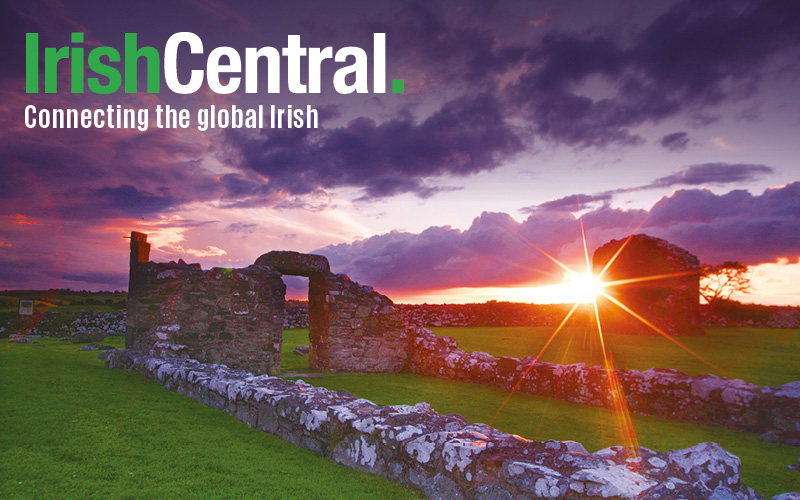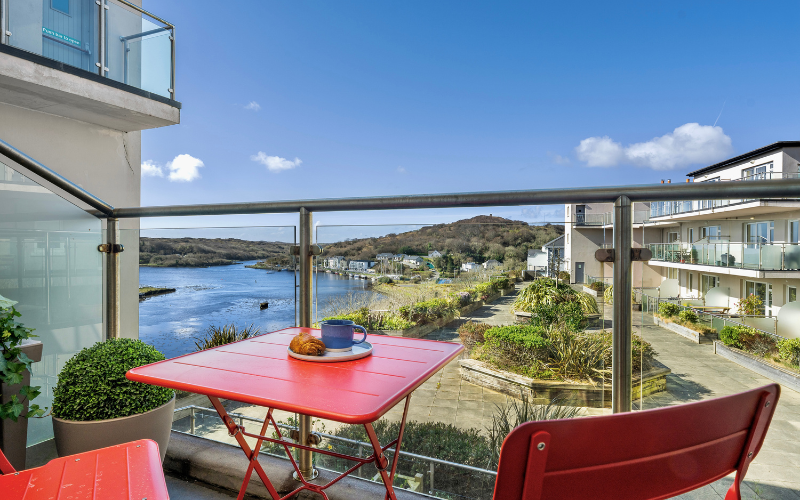White-Tailed Eagles Return to Ireland
A project to reintroduce the spectacular bird, which hasn't been seen in Ireland since 1910.
A majestic-looking bird of prey circles overhead. With his two-meter wingspan and razor-sharp beak, he might be a common sight in the wilds of America. However, here in Ireland, where these birds have been extinct since the early 1900s, such a sight is a cause for excitement.
So much so that I've been persuaded into the back of a jeep where I am jostled by boxes of slimy fish - all in order to find out about the white-tailed eagle reintroduction program.
As we trundle along a potholed track up the Killarney Mountains, Dr. Allan Mee, the project leader, tells me how it started. "It began in June 2007 when 15 white-tailed eaglets (also known as sea eagles) were flown from Norway to Killarney National Park. They hadn't been seen in Ireland since 1910 and this was the first step in bringing them back."
Limerick-born Allan is enthusiastic about the project. So enthusiastic that it tempted him back to Ireland after 23 years working on similar projects abroad, the last five of which were spent in the U.S. working with the Californian Condor.
"This eagle is so important [to Ireland]," says Allan. "Ecologically, we are missing so many top predators from our eco system. All the larger animals - bears, wolves and birds of prey - have gone. The fox is our largest predator and we have fewer birds of prey than any country in Europe. It's great to have the white-tailed eagle back."
Culturally, the eagles are a living link with the past. Look at any map of the south and west of Ireland and you'll see place names that refer to eagles. There's Sliabh an Iolair - or Mount Eagle - in West Kerry and Gob an Iolair - or the Eagle's Beak - in Waterford. There's also an old Irish folktale about a contest to see which bird could fly highest. The eagle flew highest of all the birds but the wren who had hidden away in his feathers then soared just a little higher - winning the contest through stealth. (The tale connects up to Wren Day, which is still celebrated in Ireland, particularly in the West, on the day after Christmas). "By reintroducing the eagles we can restore that connection to our folk memory before it's lost forever," says Allan.
The eagles are also expected to bring economic benefits in the form of eco-tourism. Projects of this type have already been successful in Norway and on the islands of Mull and Skye in Scotland where the eagle population is now well established.
Despite these clear-cut advantages, not everyone welcomes the eagles. When they arrived last year, farmers staged protests at the airport and were vehemently opposed to the project.
More worryingly, after the eagles were released into the wild, four were lost to poisoned bait. Investigations are continuing but the consensus is that the poisoning was deliberate and carried out by one or more farmers.
It's now one year later. The second clutch of 20 eagles has arrived and there have been no protests. Does this mean progress has been made?
Allan is hopeful. "We have been through one lambing season without incident," he says. "Once the farmers see the birds pose no problem, their concerns evaporate."
However, Irish farmers remain to be convinced. "We'd be a lot happier without the eagles," says Kevin O'Sullivan, who farms sheep in Caherdaniel, 20 kilometers from Killarney National Park.
"We have enough predators to deal with without bringing in more. Only three eagles have settled in Kerry for now. What will happen when we've got more?"
Is the eagle such a fearsome hunter that farmers need to worry for their lambs? Allan prefaces his answer by describing the eagle's diet - a mix of fish, carrion, birds and small animals such as rabbits.
"Farmers are frightened because of what happened in Scotland," he says. "Having reintroduced the white-tailed eagle in 1975, they now have 36 breeding pairs. There is speculation that two pairs killed lambs in Mull, but it hasn't been proven. The eagles may just have been eating lambs killed by other predators."
He cites the Norwegian example as justification for his argument. In a country of some two million sheep and 2,500 pairs of sea eagles, there has not been a single confirmed attack on farm animals in Norway.
By this stage in the conversation, we're halfway up the hillside overlooking Killarney's lakes in search for one of last year's eagles that has set up home nearby. When Allan's tracking system doesn't find him, we assume that he is roaming further afield. This is confirmed later when Allan gets a call from a fisherman telling him he has seen an eagle out by the Skellig Rock.
The project depends on reports like this, and so far the public have proved cooperative. Thanks to them, it is known that three of the eleven eagles are in Kerry while others have been spotted as far away as Lough Neagh in Northern Ireland.
Higher up the mountain is the eagles' temporary home - a series of boxes raised on platforms in the tree canopy. The eagles will be kept here until they are ready to feed themselves and fly away.
The enclosures have been constructed in such a way that the eagles never catch sight of the people who care for them. I spy on the birds through peepholes in the boxes while Allan feeds them. Instantly, I can see why farmers, and our forebears who hunted them to extinction, might have been wary. Although they are only three months old and not yet ready to leave their makeshift nests, these eaglets are impressive creatures. With full-grown males weighing up to five kilos and females up to six and a half kilos, they are the largest birds I've ever seen. And with powerful talons and beaks, they are also the fiercest.
During the hour it takes Allan to feed them, he describes the next stage of their development. Once the eagles are released, they should follow the same pattern as last year's birds, which flew to the lake and remained there for several months.
"It mirrors the natural process," says Allan. "We feed them twice a week or so, slowly encouraging them to feed themselves, just as their parents would."
Having learned from last year's experience, Allan intends to make one major change. He hopes to minimize the risk of poisoning by urging the birds to fish instead of relying on carrion. "We'll be throwing fish onto the lake for them so that they learn quicker," he says.
This should placate farmers. If the eagles are encouraged to fish, surely they then pose even less of a risk to animals.
Kevin O'Sullivan tends to agree. "It shows our concerns are being listened to now," he says.
Allan recognizes that such acceptance represents a step forward. "We'd have had a 100 percent survival rate last year if it weren't for the poisoning," he says. "We're trying to up our odds this year by lobbying the government to improve legislation, but if we're going to succeed completely, we'll have to win hearts and minds through education."
He has already started to work with local schools and hopes that by the time a sustainable sea eagle population is established in Ireland - which should take up to 30 years - the general public will feel far more positive about them.
In the meantime, he will be busy. His next clutch of birds will arrive next June, followed by another in 2010 and 2011. By that stage, 100 birds will have been introduced.
"I'm looking forward to seeing the first nest and the first breeding pair," he says as the jeep lumbers back down the hillside. "What we're doing now is donkey work as we prepare for that."
Sitting in the back, surrounded by empty but still-stinky fish boxes, I can't help but agree.
Story by Sharon N Chonchir
Photos by Richard Smallwood




Comments